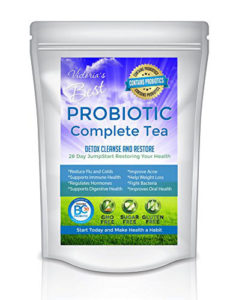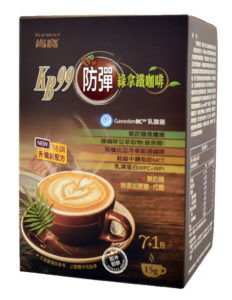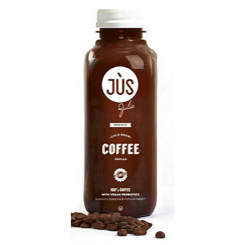What’s Brewing? Formulating Coffee and Tea with Research Supported Probiotic Ingredients

With a long history of being the beverages of choice around the world, both coffee and tea are still seeing increasing consumption levels, particularly in Asia Pacific, the Middle East and Africa. In these regions, the market for hot beverages has been projected to grow at 3% CAGR through 2024, with tea expected to grow at 3.5%.[1] In Asia, the high growth in demand for tea is largely being seen in markets in India, China and Vietnam, all of which have projected five-year CAGRs above 7%.[2] This growth has implications for manufacturers looking to innovate in this market.
What’s Driving Growth?
One of the key growth drivers of this market is demand for products with added functional benefits. Digestive health in particular has become a consumer priority. Interestingly, coffee and tea have an inherent health halo of their own, a result of their natural antioxidant properties. Combining these benefits with substantiated benefits of ingredients like research supported probiotics can help meet consumer demand for healthy daily brews.
Fast Facts:
- In 2018, 26% of recent global functional tea launches carried a digestive or probiotic claim– a 13% increase over 2016.[3]
- Recent statistics show that 17% of people who drink tea say they do so for digestive health benefits.[4]
- Kerry’s recent global survey of over 11,000 health-conscious consumers in 14 countries showed that nearly three in ten (28%) said they would be more interested in purchasing hot beverages if they contained ingredients promoting digestive health. For RTD teas and coffees the figure was 20%.[5]

Consumers’ proactive approach to their health highlights the opportunity for coffee and tea brands to drive sales by offering products with functional benefits.
Overcoming Formulation Challenges
Maintaining the benefits of the probiotic in a tea or coffee application can be difficult. The probiotic must survive the manufacturing process, the shelf life of the product, and the exposure to boiling water necessary for the preparation of the beverage. For probiotics that are vegetative cells, this presents a problem.
Because these strains do not have the outer protective coat of a spore-forming probiotic, they can’t always survive conditions like the manufacturing environment, extremes of temperature, or the time from manufacture to storage, and ultimately, consumption. Clearly, the key to successful formulation lies in the stability of the strain.
BC30™ is a spore-former, which means its outer protective coat makes it much more resilient to these processes than vegetative cells. Spore-formers are highly stable and can survive the harsh manufacturing conditions that kill traditional vegetative probiotics, including the heat of boiling water inherent in the coffee- and tea-making process.
Similarly, there can also be considerations around the delivery format. In a tea bag, for example, a larger particle size may be necessary to keep the probiotic in the bag before use and to allow efficient release and dispersion on preparation. Using a probiotic agglomerated into a larger particle size, like BC30, can help meet this challenge.
Potential Growth Areas
Probiotics in coffees and teas are a promising formulation opportunity, not only because of consumers’ increasing awareness of their benefits, but also because the emergence of spore-forming strains like BC30 has created opportunities in a wider range of beverage categories. From the traditional to the newest takes on these beverages, the category abounds with examples of innovative products. Here are just a few from around the world:
Vahdam® Digestion Probiotic Tea (India) – helps support digestive- and immune health.
Victoria’s Probiotic Tea (US) – helps support digestive health and overall wellbeing.
get probiotic® from The Republic of Tea (US) – combines chicory root, which adds inulin, with cinnamon and GanadenBC30 for digestive support.
KanBoo® Bulletproof All in One Coffee (Taiwan) – adds GanadenBC30 for digestive support and overall wellness.
Tipton Mills’ Probiotic Coffee (US) – provides probiotic benefits in a convenient instant coffee format.
Jus by Julie Probiotic Cold Brew (US) – cold brew coffee formulated with probiotics.
Discover more formulation opportunities with BC30 .
Research: The Most Important Ingredient
As intriguing as these formulation opportunities are, research supported probiotic ingredients that confirm a product’s safety and efficacy help manufacturers create products that stand apart in a rapidly growing market.
As studies increasingly show, the gut microbiome, where over 70% of the body’s immune system is located[6] is the seat of overall wellness, linking digestive and immune health. As consumers become increasingly aware that what they eat (and drink) matters, it’s more important than ever to provide scientific evidence that helps clarify and simplify choices.
For consumers, choosing the right probiotic food or beverage can be daunting, but the availability of information on a product has been shown to be key in making a purchasing decision.[7] Because BC30 is backed by more than 25 published papers that confirm its support of digestive and immune health, it’s an ideal ingredient to add probiotic benefits to the products consumers want most.
We want to help bring more probiotic teas and coffees to people’s daily cups. Contact us to learn more about formulation innovations with BC30.
Sources:
[1] Euromonitor Passport, 2020
[2] Mintel, ‘Market Sizes – Teas and Infusions – Asia Pacific’, 2019
[3] Mintel GNPD, 2018
[4] Lightspeed/Mintel, December 2018
[5] Kerry Global Consumer Survey – Digestive & Immune Health, 2019
[6] Kerry Health and Nutrition Institute, ‘Your Guide to the Gut-Brain Axis’, 27 August 2018
[7] Kerry, Global Consumer Survey, Digestive & Immune Health, 2019








